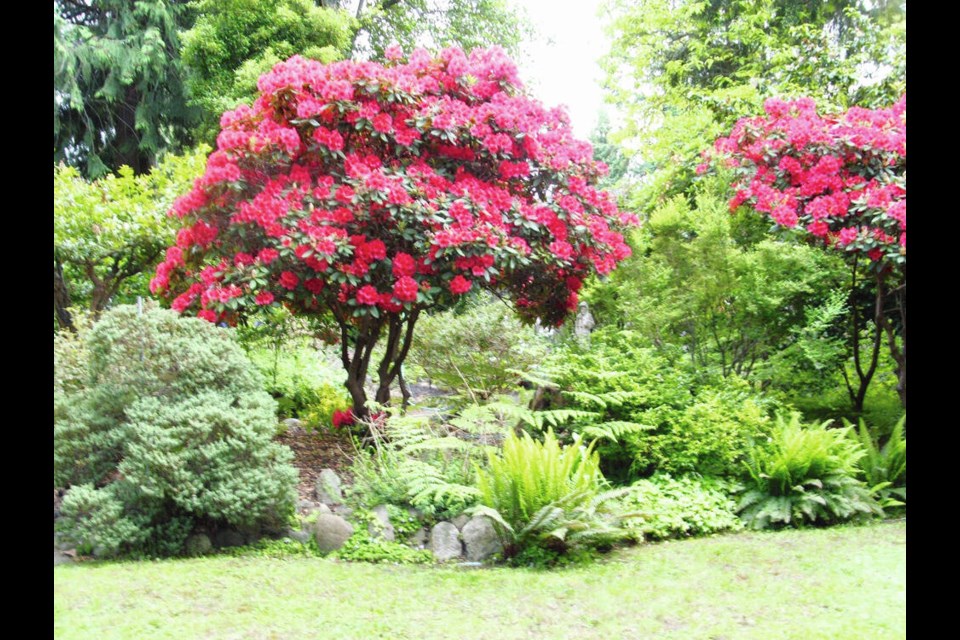Dear Helen: I think the soil in my raised beds is over-loaded with nitrogen. The carrots are all lush, leafy tops while few useable roots seem to be developing. How can I rectify this?
R.S.
Probably the quickest way to rebalance the soil would be to water with Alaska MorBloom, which has no nitrogen. It’s nitrogen-phosphorus-potassium ratio is 0-10-10. Avoid using a highly concentrated solution. A weekly application at a rate slightly more dilute than the recommended label rate will be more effective. For longer term, consider side-dressing plants with rock phosphate and kelp meal. Take these measures in small doses at a time though.
Dear Helen: I don’t remember the brand of top soil I bought to replenish an area where a large shrub had been removed, but in the following year I noticed fine, light green, grassy weeds sprouting between the plantings I’d made in the site. My attempts to remove it have failed as any bits left in the soil become more clumps of grass. It’s a nightmare. What to do?
S.R.
There are weedy grasses that spread by both rhizomes (underground stems) and tubers, making them difficult to remove without digging and removing all these underground structures.
Keep on removing as much of the underground growth as you can as you continue to lift the weedy growth. If there are significant spaces between your plants, you could also try placing pieces of cardboard or layers of newspaper on the bare ground, to deprive the weed growth of light.
The best route to accessing a high quality, problem-free soil , in bags or bulk, is to ask people you know who have made such purchases and who have thriving gardens. Almost always, one or two names will emerge as superior sources.
Dear Helen: A young Vulcan rhododendron in my garden has one branch touching the ground as if to say, “Layer me!” If I do try to create a new plant by layering that branch, how long will it take for the layered section to take root?
C.M.
A layering made in the spring will usually have rooted by the following spring. It’s a bit late now, but still worth going ahead. First, find a spot at a leaf node around 25 cm from the tip of the branch to be layered — the one touching the ground. Remove leaves next to that spot and make a slight nick with a sharp knife in the under part of the node. Prepare a pocket of soil below the nicked spot, and bury it in the soil, securing the planted part with pegs or a rock or brick over it. Keep the area watered in dry weather.
Next spring, test for rooting by giving the layered branch end a tug. Rooting will cause resistance. Once roots have been well developed, the layered branch can be severed from the mother plant and potted or placed in a garden bed.
Dear Helen: Your June 15 column was a nice tribute to your father. My mother was a big fan of his garden columns and it is frustrating that I cannot recall his name.
J.W.
He wrote as M.V. Chesnut, the initials standing for Morris Vandeleur (a family name). Everyone called him “Ches.” His was an interesting family. His grandfather Chesnut wrote two of the first Canadian school books used in Canadian schools — on arithmetic, and on grammar and composition.
Weekend column. I’m taking a break from writing the Saturday column for the upcoming long sa���ʴ�ý Day holiday weekend. Enjoy the beauty and bounty from your gardens as you celebrate our magnificent country.
GARDEN EVENTS
Introduction to new plans. The Horticulture Centre of the Pacific, 505 Quayle Rd. in Saanich, is presenting its next workshop in the monthly series Plant Identification and Culture with Jane Tice on Saturday, June 29, 1 to 4 p.m. Each session introduces 20 new plants that fit in with our local climate. Cost for HCP members $40 per session. Others $50. To register, call 250-479-6162 or at hcp.ca/workshops.
VHS meeting. The Victoria Horticultural Society will meet on Tuesday, July 2, from 7:15 to 9 p.m. in the Garth Homer Centre, 813 Darwin Ave. A panel of VHS members with expertise in growing ornamental plants, fruits, and vegetables will each make a brief presentation, followed by a Q and A. Non-member drop-in fee $5. More information at .



